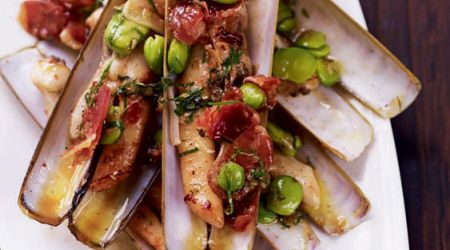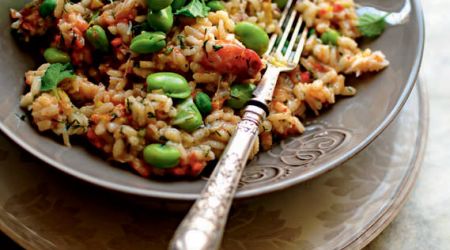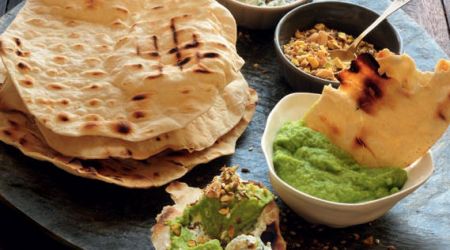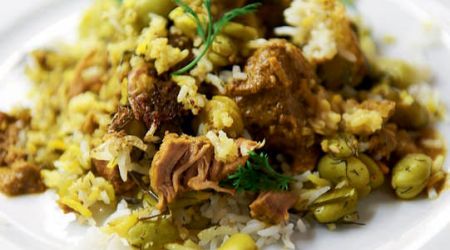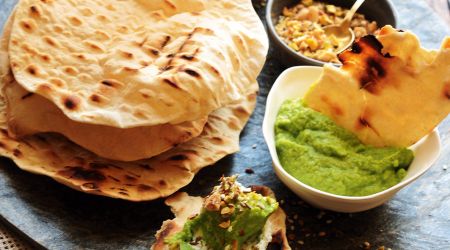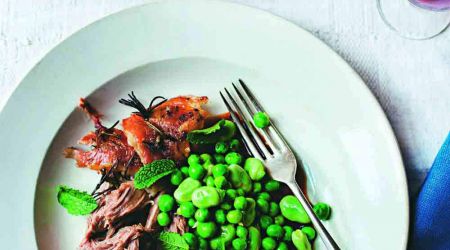Broad beans
Nothing conjures up the flavours of summer quite like the sight of crisp, green, freshly harvested British broad beans, ready for shelling. Alicia Miller explores the wonders of this ancient vegetable.
If ever there was a welcome summer visitor to gardens and allotments up and down the country, then it’s the broad bean. It’s arrival is one of the British vegetable plot’s many ways of telling you that lazy sunny afternoons lie ahead. They may be spent podding these beloved beans but that doesn’t matter – it’s part of the fun.
What by modern standards is a labour intensive vegetable – with most varieties the beans require removal from their fuzz-lined pods, as well as from the white, filmy shells that individually enclose each one – this is the ultimate back-to-basics bean. The podding process, which is almost ritualistic in its repetitiveness, harks back to a simpler time when hours could be spent at the kitchen table, shelling beans.
As old as Western civilisation itself, the humble broad bean is indubitably bound with European history. In cultivation for at least 6,000 years, this hearty foodstuff has fed populations against the backdrops of war and peace, famine and feast. Identified by its long and thick bulging shape, the vegetable’s swollen beans, which are tucked beneath the pod’s tough exterior skin, seem like edible jewels waiting to be unearthed. These beans have been a ubiquitous treasure for centuries of human habitation: dredged in symbolism, they were used as a voting tool in ancient Rome and Greece and were believed by the philosopher Pythagoras to contain the souls of the dead. Whatever its symbolic or cultural worth, however, this hardy vegetable’s true value has been in its reliability as a foodstuff. Far from fickle, it thrives in many climates, in medieval Britain sustaining and fortifying the hungry poor with protein and vitamin C through cold winters and hot summers, when other foods were sometimes scarce. In modern Britain we may not rely on it for survival, but instead are privileged to appreciate this ancient bean purely for the gastronomic pleasure that it brings to our plates. ‘We sell a tonne of broad beans,’ says the eponymous owner of Andreas Georghiou & Co, the independent grocer in Chiswick, west London. ‘They’ve always been popular, but I think in the last two or three years, as people have gone back to cooking from scratch, they are making more of them.’ Laborious or not, broad beans have had their share of critics. ‘People used to buy a lot of imported beans out of season,’ says Andreas, referring to the claim that some make about the bean being dry or chalky in texture. ‘Now people are educated about sourcing and are aware of the difference in quality when you buy seasonally; they’re realising that there’s nothing like a freshly picked, in-season, British broad bean.’
And the British broad bean season, which runs from June to September, is special not only because of the prevalence of the Longpod varieties, which are not commonly grown outside the UK, but also because it gives us access to smaller, fledgling beans which being young and fresh, are very tender. You’ll not likely find these among the imported broad beans: best eaten within 48 hours of harvesting, they should be sourced from your local greengrocer or farmers’ market rather than from a supermarket, where it can take days for produce to even reach the shelves. You’ll spot a young bean by its size, says Andreas. ‘Choose the smallest you can find; they should be no thicker than your finger and only about three to four inches in length.’ Signs of freshness include a shiny pod, perky leaves and a crisp, clean snap when the pod is bent. ‘The colour should be creamy white to bright green, never brown’ he cautions, ‘as this indicates the bean is becoming fibrous.’ The beans inside should be about the size your fingernail or smaller.
Sarah Raven, cookery writer and vendor of plants and gardening equipment on sarahraven.com, says: ‘There are many varieties of broad bean, but my favourite is a small variety called “stereo”. A cross between a pea and a bean, it has a unique flavour and small pods, and lacks the tough skin that you find on some varieties.’ When preparing broad beans, Sarah stresses the importance of taking into account the age of the bean: ‘Young beans can be left whole and eaten raw, and are best paired with a mild flavour that enhances their freshness.’ When it comes to the larger, starchier beans, Sarah suggests bold, salty flavourings. ‘You see it in all the cooking cultures where the bean is traditional,’ she points out. ‘In Spain they pair it with jamón serrano, in Italy with salty cheese, in Greece with olives and tomato.’
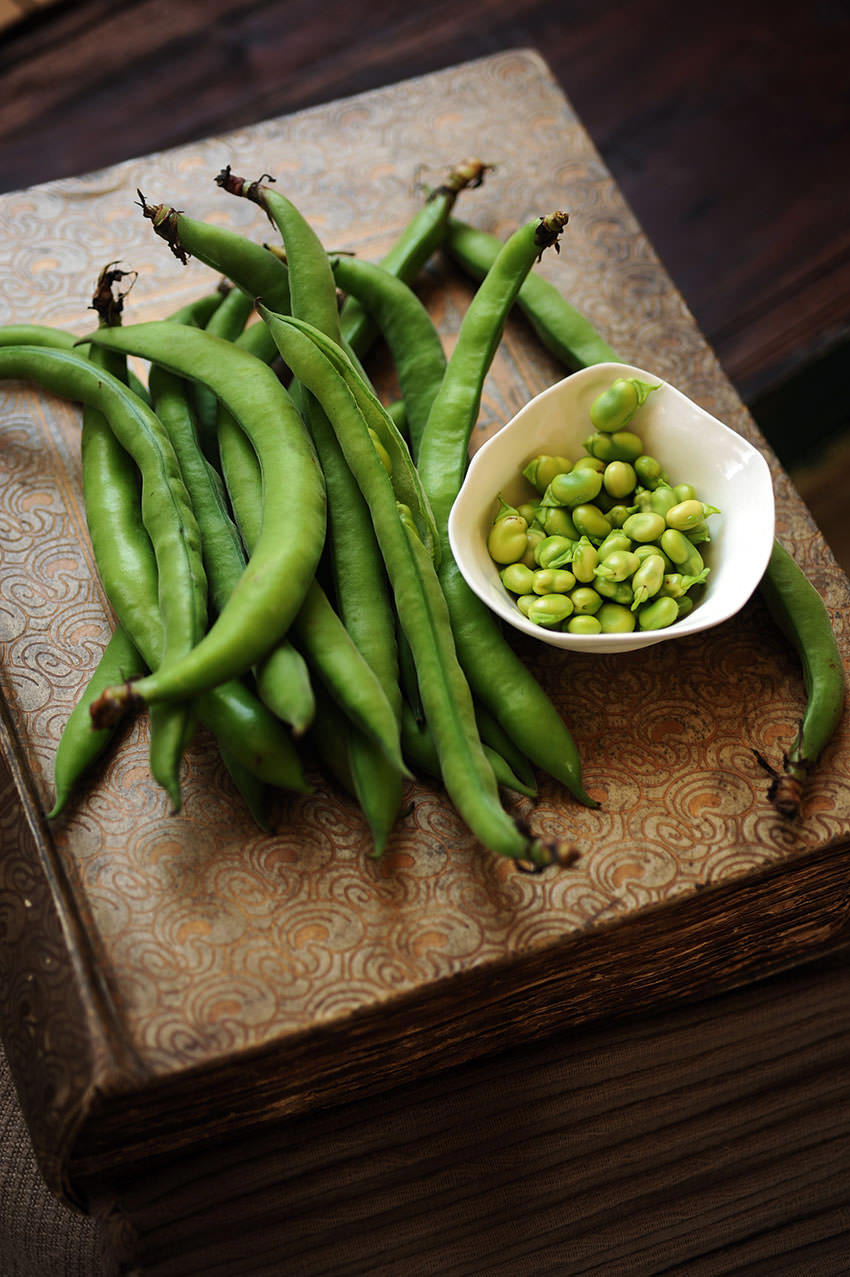
Recipes
Get Premium access to all the latest content online
Subscribe and view full print editions online... Subscribe

